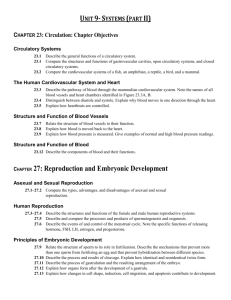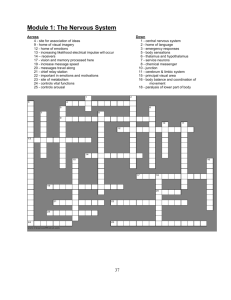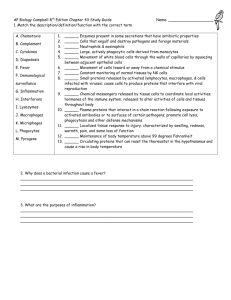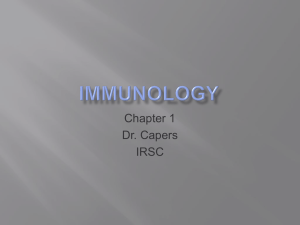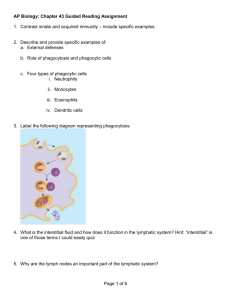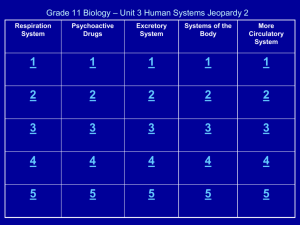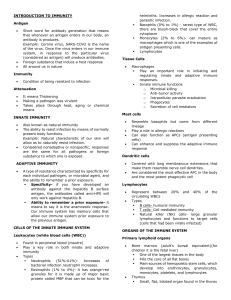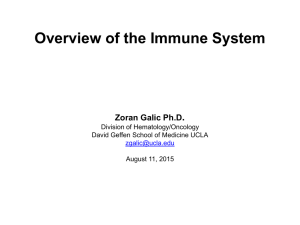Anatomy and Physiology Unit
advertisement
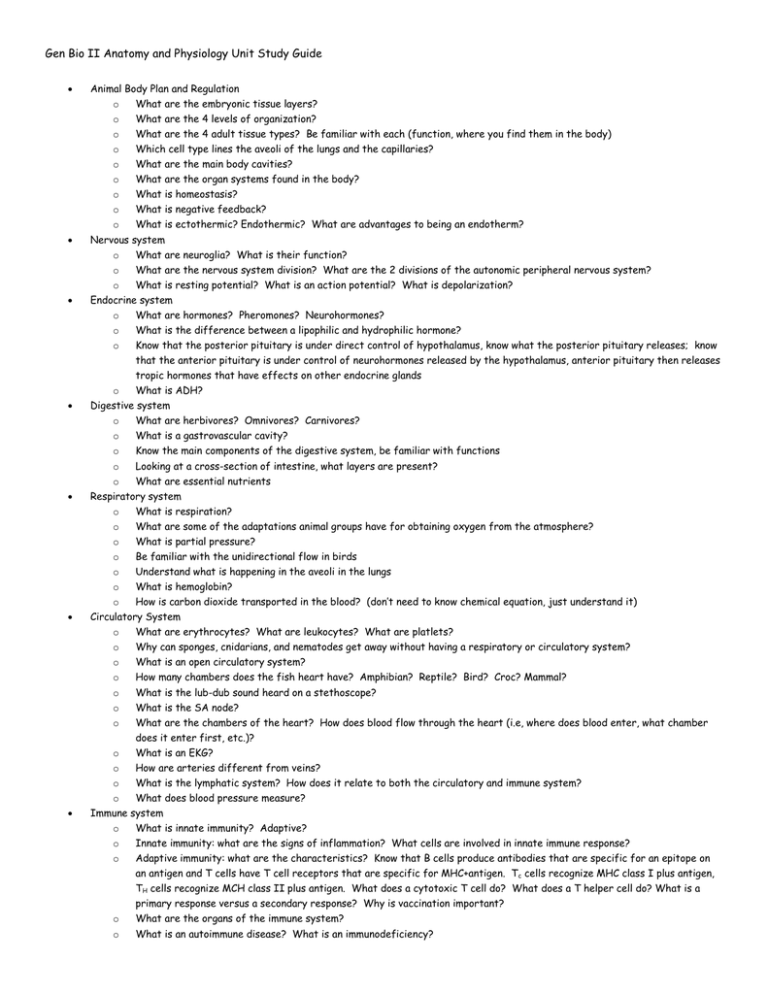
Gen Bio II Anatomy and Physiology Unit Study Guide Animal Body Plan and Regulation o What are the embryonic tissue layers? o o o o What are the 4 levels of organization? What are the 4 adult tissue types? Be familiar with each (function, where you find them in the body) Which cell type lines the aveoli of the lungs and the capillaries? What are the main body cavities? o o o o What What What What Nervous system o What are neuroglia? What is their function? o What are the nervous system division? What are the 2 divisions of the autonomic peripheral nervous system? o What is resting potential? What is an action potential? What is depolarization? Endocrine system o What are hormones? Pheromones? Neurohormones? o What is the difference between a lipophilic and hydrophilic hormone? o o Know that the posterior pituitary is under direct control of hypothalamus, know what the posterior pituitary releases; know that the anterior pituitary is under control of neurohormones released by the hypothalamus, anterior pituitary then releases tropic hormones that have effects on other endocrine glands What is ADH? Digestive system o What are herbivores? Omnivores? Carnivores? o What is a gastrovascular cavity? o Know the main components of the digestive system, be familiar with functions o Looking at a cross-section of intestine, what layers are present? o What are essential nutrients Respiratory system o What is respiration? o o o o are the organ systems found in the body? is homeostasis? is negative feedback? is ectothermic? Endothermic? What are advantages to being an endotherm? What are some of the adaptations animal groups have for obtaining oxygen from the atmosphere? What is partial pressure? Be familiar with the unidirectional flow in birds Understand what is happening in the aveoli in the lungs o What is hemoglobin? o How is carbon dioxide transported in the blood? (don’t need to know chemical equation, just understand it) Circulatory System o What are erythrocytes? What are leukocytes? What are platlets? o o o Why can sponges, cnidarians, and nematodes get away without having a respiratory or circulatory system? What is an open circulatory system? How many chambers does the fish heart have? Amphibian? Reptile? Bird? Croc? Mammal? o o o What is the lub-dub sound heard on a stethoscope? What is the SA node? What are the chambers of the heart? How does blood flow through the heart (i.e, where does blood enter, what chamber does it enter first, etc.)? o o o o What is an EKG? How are arteries different from veins? What is the lymphatic system? How does it relate to both the circulatory and immune system? What does blood pressure measure? Immune system o What is innate immunity? Adaptive? o Innate immunity: what are the signs of inflammation? What cells are involved in innate immune response? o Adaptive immunity: what are the characteristics? Know that B cells produce antibodies that are specific for an epitope on o an antigen and T cells have T cell receptors that are specific for MHC+antigen. Tc cells recognize MHC class I plus antigen, TH cells recognize MCH class II plus antigen. What does a cytotoxic T cell do? What does a T helper cell do? What is a primary response versus a secondary response? Why is vaccination important? What are the organs of the immune system? o What is an autoimmune disease? What is an immunodeficiency? Urinary System o What are some important ions needed for homeostasis? o o o o What is osmolarity? Osmotic pressure? Tonicity? Osmoconformers? Osmoregulators? What are nitrogeneous wastes? Be familiar with how different groups of organisms eliminate wastes What are the 3 functions of the mammalian kidney? o What is a nephron? What is the glomerulus? Reproductive system o Do most animals reproduce sexually or asexually? o What is hermaphroditism? o o o o How is sex determined in animals? What is oviparity? Ovoviviparity? Viviparity? What is an amniotic egg? What is the difference between monotremes, marsupials, and placental mammals?

